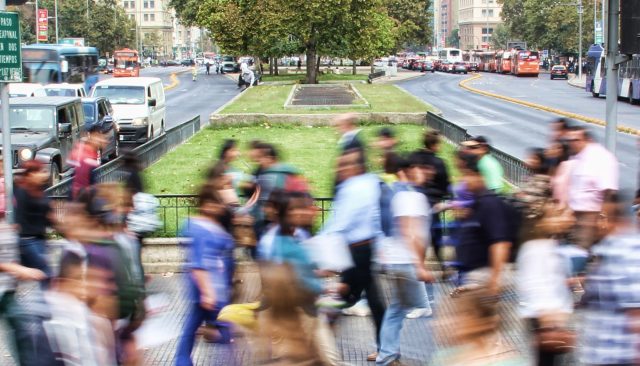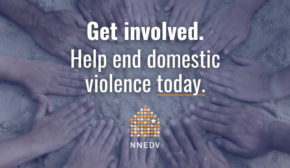NNEDV Recognizes World Day Against Trafficking in Persons
July 30, 2016
The United Nations has recognized July 30 as World Day Against Trafficking in Persons. The National Network to End Domestic Violence (NNEDV) would like to observe this day by telling the story of one trafficking victim:*
Chrystal was 15 when she started seriously thinking about leaving home. She couldn’t take the sexual abuse by her stepfather anymore; it had been going on for as long as she could remember. Then one day she met a guy who seemed like everything she’d been waiting for. Bobby was older and good-looking. He had a car, nice clothes, and money. He paid attention to her and bought her things. Before long, he asked her to stay with him. Chrystal was so relieved to get away from her stepfather and start her new life with her love.
The honeymoon phase didn’t last. Bobby started being hateful to her, even hitting her sometimes, but he always apologized later. Then one night he told her he didn’t have the rent money, and needed her to help. He had some friends who would give him money to come over and “party” with Chrystal. She didn’t want to do it, but what choice did she have? Bobby was her boyfriend. He loved her. He rescued her from her stepfather’s house. And… she was afraid of him.
Trafficking takes many forms. It is the recruitment, transport, harboring, or receipt of persons by threat, use of force, deception, coercion, or abuse of power. [1] It includes domestic or international sex and labor trafficking of adults and children. Chrystal’s story is not every trafficking victim’s story, but this story is uniquely tied to the work NNEDV does.
For someone like Chrystal, who is being trafficked by the man she considers her boyfriend, the dynamics look much more like domestic violence than a typical trafficking case. Legally, it is trafficking. He is forcing her to do commercial sex work from which he benefits financially. He is trafficking her.
Perpetrators of domestic violence and trafficking use power and control to dominate their victims, employing tactics such as isolation; physical, sexual, and emotional abuse; threats against family members; and deprivation of sleep, food, or medical care. [2] When domestic violence intersects with poverty, trafficking is more likely to occur because the victim is vulnerable to sex or labor exploitation in order to meet basic survival needs or as the source of support for the family. [3]
Because of these intersections with domestic violence, as well as the sexual trauma experienced by sex trafficking victims, it is crucial that advocates at domestic violence and sexual assault agencies know how to recognize trafficking and respond appropriately. [4] Advocates at these agencies must have safety, confidentiality, and survivor-centered advocacy at the core of their work. Advocates must also focus on first providing victims with all available options in terms of legal remedies, medical care, and social services, and then working with survivors to help them access the options they choose for themselves.
However, it is important for advocates to be aware that the legal remedies and level of endangerment can be very different for trafficking victims, as can other services and agencies with which trafficking survivors interact. [4]
Resources are available to help advocates learn about these intersecting issues. The National Human Trafficking Resource Center developed this tool for advocates to identify and assist possible trafficking victims. The Asian-Pacific Islander Institute on Gender-Based Violence created these recommendations for advocates working with trafficked women. Additionally, the American Bar Association published this guide to working with trafficking victims for attorneys and advocates, with specific recommendations for advocates on pages 31-33.
NNEDV continues to stand with all survivors through bringing intersectional issues to the center of our work. Only through the integration of advocacy efforts against all forms of violence and oppression can we truly strive to create a world free from violence.
—
[1] United Nations Office on Drugs and Crime. (2012). Global Report on Trafficking in Persons 2012. Vienna, Austria.
[2] The Asian & Pacific Islander Institute on Domestic Violence. (2002). Health Issues Affecting Trafficked Individuals. San Francisco, CA
[3] Minnesota Human Trafficking Task Force (2014). Human Trafficking & Sexual and Domestic Violence. Minneapolis, MN.
[4] Dabby, F. C. (Revised 2013, July). Trafficking: Considerations & Recommendations For Domestic Violence & Sexual Assault Programs. San Francisco, CA: The Asian & Pacific Islander Institute on Domestic Violence.
*Names and identifying details have been changed to protect privacy.





